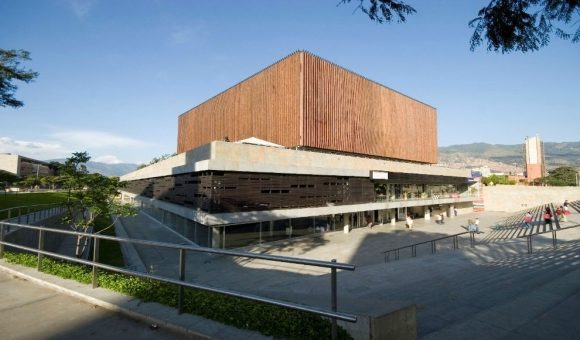Expo Agrofuturo 2015: Big Jump in International Visitors

The annual “Expo Agrofuturo” 2015 conference and trade show at Medellin’s giant Plaza Mayor conference center in mid-August showed some 17,000 visitors how advanced technology and innovation can help farmers and ranchers boost profitability.
According to the show organizers, some 360 exhibitors showed their wares over the 13,000 square meters of trade-show space.
Since 2012, companies participating in Expo Agrofuturo in Medellin have reported sales deals generated at the show totaling some US$500 million. Deals worth some US$250 million are expected from this year’s show, according to Expo Agrofuturo.
International visitors to the annual show have climbed steadily, reaching some 930 last year, up 78% from the 2012 version of the show, while some 1,100 international visitors from 35 countries came to the 2015 show, according to the organization.
Among the delegates, companies and expert speakers at Expo Agrofuturo were those from Holland, Israel, the United Kingdom, the United States, Australia, Chile, Brazil, China, Mexico and elsewhere, according to the show organizers.
Innovation highlights at this year’s show included a presentation by University of Manchester (UK) research Bruce Grieve on using small flying drones equipped with cameras to help enable “precision agriculture.”
Such drones are already being employed by some relatively large-scale farmers for the early detection of crop diseases, lack of fertilization or water in certain areas of the farm, verification of farm boundaries and to boost the efficiency of gathering and storing of data, according to experts.
In a separate interview, Medellin-based AgroLevels director-general Juan Felipe Restrepo told Medellin Herald that the type of drones employed by some palm-oil plantations in Colombia are capable of detecting physical abnormalities in individual plants, but can’t actually detect diseases or plagues.
The AgroLevels technology — which Restrepo described at a recent presentation at the “Big Data 2015” conference co-sponsored by the Medellin Chamber of Commerce — enables plantation managers to capture and computerize the precise location of each and every palm-tree while avoiding tedious and error-prone hand-entered data.
“It is indeed possible to detect differences among plants that could indicate some problem, but we don’t make diagnoses [of plant diseases or plagues] based upon the drone photos,” Restrepo explained.
















